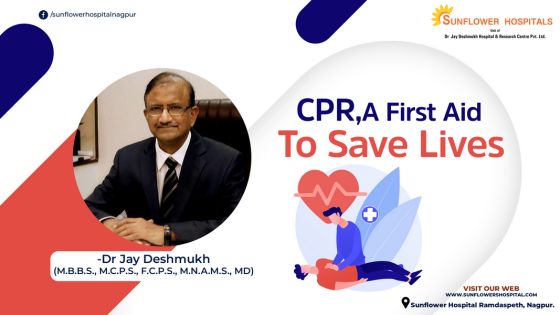What is the first step on how to perform CPR in public settings?
Initially, check the environment for any traffic or structures that are not stable. Make sure that the scene is safe for you as well as to the victim.
What is the next step?
Shake the person and loudly ask whether you are okay. If there is no response assume that the person needs help. Call for help. Shout for help to attract the attention of others nearby. Ask someone to call an ambulance. Particularly at the airport or other public places locate an Automated External Defibrillator (AED). These should be made available at malls, schools, colleges, and offices.
How do you move further?
Look, listen, and feel for normal breathing by observing the chest, listening to breath sounds, and feeling for breath on your cheek. If the person is not breathing or gasping commence CPR immediately.
How to do chest compressions?
Position your hands, place the heel of one hand on the center of the person’s chest on the lower half of the sternum, and push the other hand on the top. Interlock your fingers and keep the elbows straight. Push hard and fast at a depth of about 2 inches for adults, and let the chest fully recoil between compressions.
Importance of AED?
The AEDs are important in public settings because they enable bystanders to deliver early defibrillation before early medical emergency services arrive. This early intervention can significantly increase the chances of survival for someone experiencing cardiac arrest. They are designed for simplicity with step-by-step visual or voice instructions. In short, it is a life-saving device used to treat sudden cardiac death by analyzing the heart’s rhythm and delivering a shock if needed.
What are the key changes in the 2020 American Heart Association guidelines?
They recommend high-quality CPR. Focus on rate 100 to 120 compressions per minute depth of at least 2 inches in adults and minimizing interruptions in chest compressions. Prioritize chest compressions if untrained or if rescue breaths are difficult to perform. Quick access to AED and following the device’s voice prompts are important.
What about AED?
This is a portable medical device designed to treat sudden cardiac arrest, a condition where the heart suddenly stops beating. The AED can analyse the heart’s rhythm and if necessary deliver an electric shock to the heart. The device is applied externally, with adhesive pads placed on the person’s chest. The defibrillator delivers an electric shock to the heart when the device detects a life-threatening arrhythmia, such as ventricular fibrillation or pulseless ventricular tachycardia. One pad is placed on the right upper chest and the other pad on the left lower chest.
What about rescue breaths?
If you are trained and comfortable proceed with rescue breaths. Open the airway by tilting the head back slightly and lifting the chin. Pinch the nose shut and give 2 rescue breaths, each lasting about 1 second. Continue with cycles of 30 compressions and 2 rescue breaths. Hands-only CPR is done if you are not trained in rescue breaths or are uncomfortable, focus only on chest compressions without stopping.

